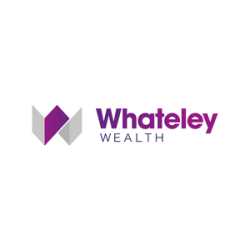New tax year, new you - how will you plan for the financial year ahead
Posted by siteadmin on Thursday 13th of April 2023.

When entering a new financial year, it’s important to start planning ahead, as early as possible. Many of us may worry about the future and how this may affect our financial condition during difficult economic times. Because of this, it's more crucial than ever to understand how this year’s financial changes affects your finances and the safety of your resources.
Even if it seems a little overwhelming, we can help. There are many strategies that might enable you to divide the financial planning process into reasonable, digestible, bite-sized pieces.
PAYE tax code
The tax code will be our first topic of discussion. Whether you work for yourself, for a company or you’re retired, you should check your tax code to ensure you’re paying the correct amount of tax – rather than too much or too little. If you're unsure, check in with your accountant or get in touch with HMRC.
Capital gains tax (CGT)
Worth £12,300 in 2022/23, the tax-free allowance threshold will be cut in half to £6,000 starting in April 2023 and further decrease to £3,000 starting in April 2024. Ensuring you’re making the most of the current allowance before it’s reduced in the next few years.
Dividend allowance
The yearly dividend allowed will likewise decrease from £2,000 to £1,000 as of April 2023. In April 2024, this will drop even further to just £500. It’s advised to make use of the dividend allowance this financial year before it’s reduced even further. Therefore, making the greatest use of allowances is crucial to maximising tax-free revenue and preventing unnecessary loss or waste. Adapting capital allowance claims, for instance, can prevent income from falling below the level of available personal allowances.
At the time of writing, there have been no adjustments to the dividend tax rates.
Pension allowance
Using your pension allowance will enable you to accumulate tax-free savings. The average person's threshold has recently been increased from £40,000 to £60,000 and unused benefits are often carried over for up to three years. Using our pension calculator, you can make an analysis of your pension contributions and what you will receive during retirement. If you still would like some further support and guidance, you can get in touch with a member of our team.
Prior to completely removing the Lifetime Allowance in a subsequent Finance Bill, the government eliminated the Lifetime Allowance fee on April 6, 2023.
The maximum Pension Commencement Lump Amount for people without protections will stay at £268,275 for the foreseeable future. Also, starting on April 6, 2023, the government will boost the Annual Allowance from £40,000 to £60,000. People can still carry forward any unused Annual Allowances from the preceding three tax years.
Individual savings accounts (ISA) and Junior ISA (JISA)
With interest rates increasing on saving accounts, it is important to note that if the interest you earn is more than your Personal savings allowance, HMRC will normally collect the tax on any excess. However, ISAs are a tax-efficient way to save because they are excluded from income and capital gains taxes. This can be extremely beneficial and a key area for your financial planning this financial year.
The allowance for contributions to your ISA account is currently £20,000 each year. A cash ISA and a stocks & shares ISA are both permissible, but they have many differences. Money placed in a cash ISA is similar to money placed in a savings account, However, unlike a savings account, you don’t need to pay tax on any of the interest you accumulate.
Whereas a stocks & shares ISA is effectively a 'tax wrapper' that can be put around a wide range of different investment products. Any investment growth or interest earned within a Stocks and shares ISA is tax-free. Lots of different types of investment can be held in an ISA, including: unit trusts. investment trusts.
Creating a Junior ISA (JISA) is something that is extremely useful if you have kids. Because of the significant tax advantages, establishing an account and putting money away each year will give you a significant lump sum for your child's 18th birthday. They can then use this money to pay for a car, fund their education or contribute to the down payment for their first home. The JISA allowance, at £9,000 annually, is lower than the adult allowance.
Corporation tax
Corporation Tax must be paid by all UK businesses on their revenue. Self-Assessment, as opposed to Corporation Tax, is the method used to tax the profits of unincorporated firms (sole proprietorships and partnerships).
The primary rate of corporation tax has increased from 19% to 25% with effect from April 2023. The previous 19% rate is still applicable if your profits are £50,000 or less, but if they are higher, your company will pay extra tax. Your level of profits for each fiscal tax year will determine this.
If your yearly profits are at or below a new £50,000 threshold, the current 19% rate will still be in effect. Companies that make £250,000 or more in annual profits are subject to the full 25% rate. There will be a system of marginal relief in place between these two rates.
Planning for the year ahead…
One method to make sure you are ready for the upcoming tax year is to do a thorough evaluation and put together a financial plan. You can maximise your financial resources with the aid of our qualified experts. We'll also look at techniques so you can make the most of your income.
Get in touch for your first consultation free of charge.
For more information and advice on what you need to do and what you could be thinking about before the end of the financial year, get in touch or call 0121 285 8528.
Disclaimer: The value of your investments can go down as well as up, so you could get back less than you invested.
The purpose of this communication is to provide technical and generic information and should not be interpreted as a personal recommendation or advice.
Picture source: https://www.pexels.com/photo/person-putting-coin-in-a-piggy-bank-3943716/

You are now departing from the regulatory site of Whateley Wealth Management Ltd. Whateley Wealth Management Ltd is not responsible for the accuracy of the information contained within the site.